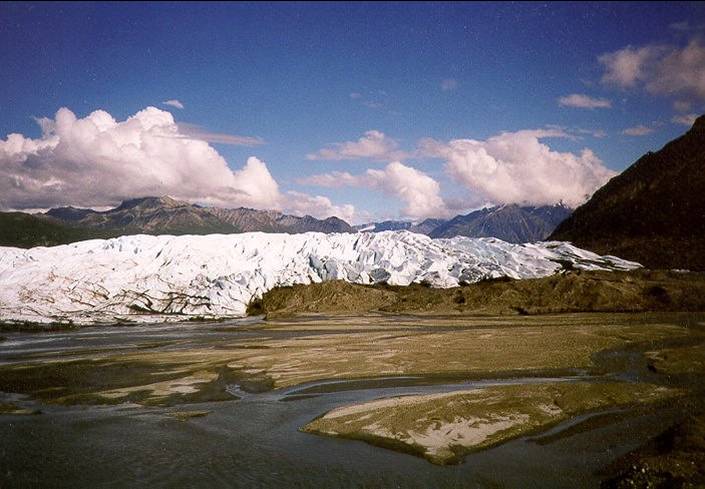WP-3 Re-populating Europe after the Last Glacial Stage

The period from 20,000-6,000 BP contains well defined abrupt environmental transitions (AETs), tephras and demographic events; the imatically driven by AETs. Tephrostratigraphy and tephrochronology are the tools with which the RESET programme will address these research questions.
Ice-core records have demonstrated, beyond reasonable doubt, that pronounced climatic shifts with severe environmental consequences are possible within as little as 20 years or less. How did AETs impact on prehistoric settlement patterns?
Aims and Research Objectives
The aim of this work package is to establish when and how northern Europe was re-populated after its near abandonment at the Last Glacial Maximum (LGM). This will be addressed through a series of research objectives:
- To refine, through tephrostratigraphy, the accuracy of archaeological radiocarbon dating in the period 20-6 ka BP
- To integrate these data with the GRIP event stratigraphy and palaeoclimatic proxies in Western Europe
- To assess from this archive the relative magnitude of AETs during this period
- To use this enhanced record to determine the timing and direction of population dispersal from the LGM refugia in northern Spain and southern France
Research focus
The late-glacial has a high-resolution climatic record and a large number of site-based archaeological radiocarbon determinations (e.g. 7000 entries in the S2AGES database). The current level of chronological precision (based primarily on radiocarbon, with all the uncertainties associated with such probability dependent methodologies) is not, however, sufficient good to test robustly the precise temporal relationships between archaeological events and AETs in the late-glacial of western Europe. Previous studies (e.g. Gamble et al. 2004; Housley et al. 1997) have sought to use the frequency of radiocarbon determinations by region and period as proxies for relative past populations distributions. The application of tephrostratigraphy to these earlier studies should allow archaeological horizons to be more precisely correlated with high-resolution climatic records (ice-cores, marine and varved lacustrine stratigraphies) thus permitting two alternative models to be analysed:
- Population ‘push’ model, where after 16 ka BP the trend to climatic amelioration drove population expansion; in this case AETs controlled the timing and direction of the expansion of settlement. The distribution of Late Palaeolithic hunters was therefore strongly dependent on general climatic conditions
- Population ‘pull’ model, where localised resources, as indicated by multi-proxy records, attracted re-population north of the refuges irrespective of the general climatic trend. In this model the importance of AETs was to create local opportunities which mobile hunting populations could exploit
The relationship between cause and effect in these models can only be addressed with high temporal resolution, which is not normally available in archaeological contexts except under exceptional circumstances.
 Comparison of the d18O records for the NGRIP and GRIP ice-core records for the last 30,000 years
Comparison of the d18O records for the NGRIP and GRIP ice-core records for the last 30,000 years
at a 50-year resolution. 'Microtephras' may allow archaeological events to be correlated with climate cycles.
After Lowe et al. (2008) Quaternary Science Reviews v.27, p.9
Geographical focus
Of particular interest to this work package is the expansion of prehistoric populations in western Europe during GS-2a from a southern refuge in Cantabria and Portugal, and the subsequent impact of the GS-1 cold phase (Younger Dryas) leading to population contraction.
It is clear that Iberia was the principal southern refuge for human populations in western Europe at the LGM, as shown by the consistent pattern of radiocarbon determinations over time from this region. The small number of dated assemblages older than 16 ka in France outside Aquitaine suggests a northward attenuation of settlement, although the earlier views that these northern areas were completely abandoned can no longer be supported.
Taking account of these settlement patterns (e.g. distribution maps, below) our geographical focus is the Rhône-Saône-Rhine dispersal corridor, the French Jura, the Swiss and Italian pre-Alps, the Paris basin, and the Rhineland and Swabia.
 |
 |
| 14C dated archaeological sites, 17.5-20 ka BP |
14C dated archaeological sites, 12.5-15 ka BP |
Volcanic eruption events
In terms of volcanic eruption episodes relevant to this timeframe, the following eruptions are known to occur within our study region. Given little previous work on 'microtephra' layers in archaeological sites, the potential to find further distal pyroclast horizons must be high.
| Vasset-Kilian-Pariou-Chopine, Cantal, France |
c. 8500 uncal 14C yrs BP (c.9300 - 9700 cal BP) |
e.g. Miallier et al. (2004) |
Vedde Ash, southern Iceland
|
c.10 300 uncal 14C yrs BP (c.12 170 cal BP) |
e.g. Blockley et al. (2007) |
| Laacher See (LST), Eifel, Germany |
c.11 130 uncal 14C yrs BP (c.12 880 cal BP) |
e.g. Brauer et al. (1999) |
| Puy de La Nugère, Cantal, France |
c.11 400 uncal 14C yrs BP (c.13 270 cal BP) |
e.g. Juvigné et al. (1996) |
| Borrobol 2 |
c.12 000 uncal 14C yrs BP (c.13 900 cal BP) |
e.g. Davies et al. (2003) |
| Borrobol 1 |
c.12 300 uncal 14C yrs BP (c.14 400 cal BP) |
e.g. Turney et al. (1997) |



